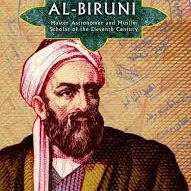
Imagine trying to measure the size of the Earth using nothing but shadows, trigonometry, and a hill. Now imagine getting it right, with just a few miles off, over a thousand years ago.
That was Al-Biruni.
While Europe wrestled with superstition, a boy in Khwarazm was growing into one of the greatest minds of the Islamic Golden Age. Al-Biruni’s biography rarely shows up in high school textbooks, but his brilliance echoes in everything from modern astronomy to GPS systems.
The Mind Born for the Stars
Al-Biruni was born in 973 CE in present-day Uzbekistan. Raised near the scholarly capital of Kath, he had access to libraries, observatories, and some of the most famous Muslim scholars of the era.
By age 17, he was already doing serious astronomical calculations. Before he turned 30, he’d written his first major work on astrology, compiled star charts, and begun translating Greek and Sanskrit texts.
He was no ordinary scholar. Al-Biruni was a polyglot, a philosopher, a mathematician, and a pioneer in the scientific method, centuries before the Renaissance would “reinvent” it.
He didn’t dabble. He mastered it.
His Contributions Weren't Just Big; They Were Centuries Early
Among Al-Biruni’s achievements, one stands out: his calculation of Earth’ s circumference.
Using a mountain and geometry alone, he estimated it to within 1% of modern measurements.
He also:
- Measured the Earth’s radius and gravity variations
- Studied the moon’s influence on tides
- Created tools for timekeeping and mapmaking
- Challenged the notion that the Earth was the center of the universe
He Measured, Compared, and Understood
Al-Biruni wasn’t content with formulas and facts. He wanted to understand people.
He didn’t just record data while he was in India; he lived it. He learned Sanskrit, read Hindu texts, and wrote Kitab al-Hind, which is one of the most respectful and in-depth studies of a culture ever done by an outsider.
That’s what makes him stand out from other medieval Islamic scholars. He approached knowledge not as a conquest, but as a bridge to connect with others.
In an age of empires and war, Al-Biruni studied different belief systems without mocking them. He compared religions, cultures, and calendars with a scientist’s eye and a humanist’s heart.
His Curiosity Had No Borders
It’s easy to forget that this was all done without Google, without labs, without fancy equipment.
Al-Biruni’s discoveries in astronomy came from grinding math, relentless observation, and imagination. He didn’t just theorize; he built tools, took measurements, and did the math himself.
His geography studies are equally stunning. He helped refine latitude and longitude, mapped rivers and coastlines, and even proposed that the Indian Ocean was once an inland sea.
You want to talk about polymaths of the Islamic Golden Age? Al-Biruni didn’t just wear many hats. He invented new ones and then taught others how to wear them.
Why Al-Biruni Still Matters
In a world where conflict and ideology are becoming more common, Al-Biruni shows us how to be curious without being arrogant. Accuracy with compassion and a wish to connect through understanding.
He reminds us that science doesn’t have to be boring. It can be curious, welcoming, and even poetic.
He saw patterns in the stars, but he also saw worth in every language, culture, and idea that was worth trying out.
Want to Know More?
Al-Biruni’s biography doesn’t belong in the dusty corners of history. It’s part of our day-to-day life, whether we see it or not.
At Global Edutopia, we believe real heroes don’t just solve problems. They ask the kind of questions that push people to work with each other.
Want more stories of cross-cultural brilliance and scientific courage? Explore our Real Heroes series, and rediscover the minds that measured more than just the stars.

